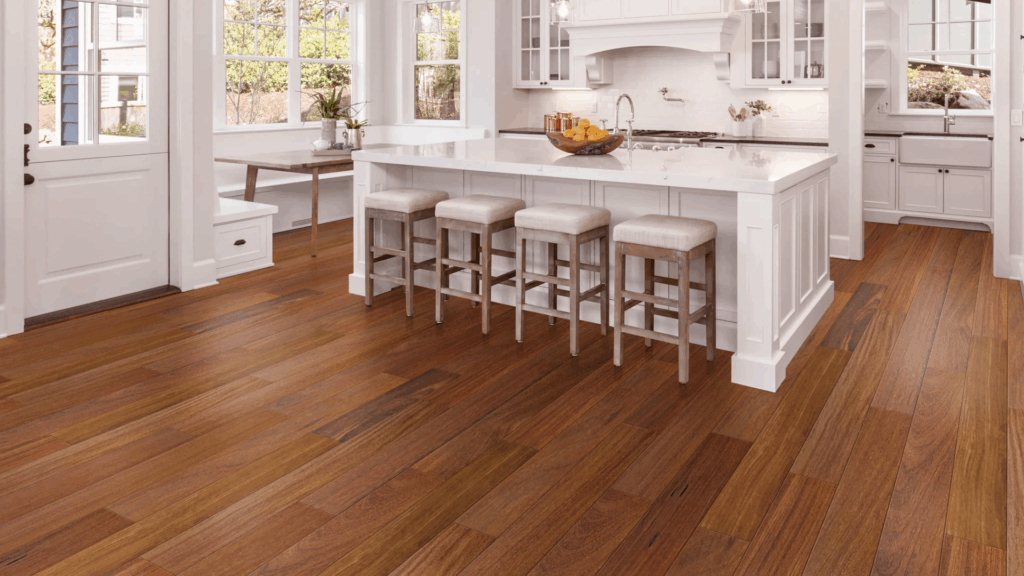Hardwood floors are a big part of many homes, including mine. They look great, feel solid underfoot, and can last for years if I take care of them properly.
But I’ve learned that without a few simple steps, wood floors can get scratched, stained, or worn down pretty quickly.
If you’re reading this, you’re probably asking, “How do I protect my wood floors from damage?” I’ve asked the same thing, and in this blog, I’ll share the answers I’ve found.
You’ll learn why caring for your floors matters, what causes the most damage, and, most importantly, some easy tips I use to keep mine looking clean and strong.
These tips don’t need fancy tools or special skills, just a little care.
I made this guide to help, not waste your time. Everything here is honest, practical, and based on real-life experience.
If you want to protect your floors without the stress, you’re in the right place.
Why It’s Smart to Care for Your Wood Floors?

Caring for your wood floors goes beyond appearances; it helps protect your home, supports a healthier environment, and saves you from future hassles and expenses.
Wood flooring is one of the most used features in your home. It withstands the daily pressure of foot traffic, furniture, pets, and more.
Without regular upkeep, these surfaces can quickly show signs of wear, scratches, dents, stains, or moisture damage can occur before you realize it.
The good news is that simple habits can prevent most of these issues.
- Supports a Healthier Home: Well-maintained floors can help improve your indoor air quality. Dust, dirt, and allergens often settle on neglected surfaces.
- Helps You Save in the Long Run: Consistent care can prevent minor problems from turning into expensive repairs. If ignored, a few surface scratches can grow worse.
- Improves Safety: Floors in poor condition can increase the risk of accidents. Loose boards, cracks, or splinters may lead to trips or injuries. Wet or dirty areas can also cause slips.
- Enhances the Appearance of Your Space: A clean wood floor brings warmth and brightness to a room. It gives your living area a neat and polished look, even if your furnishings are simple.
What Can Harm Your Wood Floors?
Even small things can cause big problems for hardwood floors. You might not notice the damage right away, but it builds up over time.
A few everyday habits can wear down the surface and leave scratches, stains, or dents. The most common things that cause damage are:
- Dirt and sand: Tiny bits of dirt act like sandpaper. They rub across the floor as people walk, leaving scratches and dull spots.
- Water and spills: Even clean water can harm wood. If it soaks in, it can stain or cause the boards to swell and warp.
- Sunlight: Direct sunlight dries out the wood and fades its color. Over time, it can leave some areas lighter than others.
- Heavy furniture: Sofas, beds, and tables that sit in one place for too long can be damaged, and sliding them can scratch the floor.
- Pet nails and shoes: Sharp claws and hard soles can scuff and scrape the surface, especially in high-traffic areas.
Tips to Protect Hardwood Floors
Hardwood floors are beautiful and durable. They make your home feel warm and welcoming.
The natural grain and color of the wood add style to any room. But even though these floors are strong, they’re not immune to damage.
With a few consistent habits and the right tools, you can keep your floors looking great.
I’ve learned that whether your floors are brand new or have been part of your home for years, these simple steps can help you maintain them day by day.
1. Use Furniture Pads
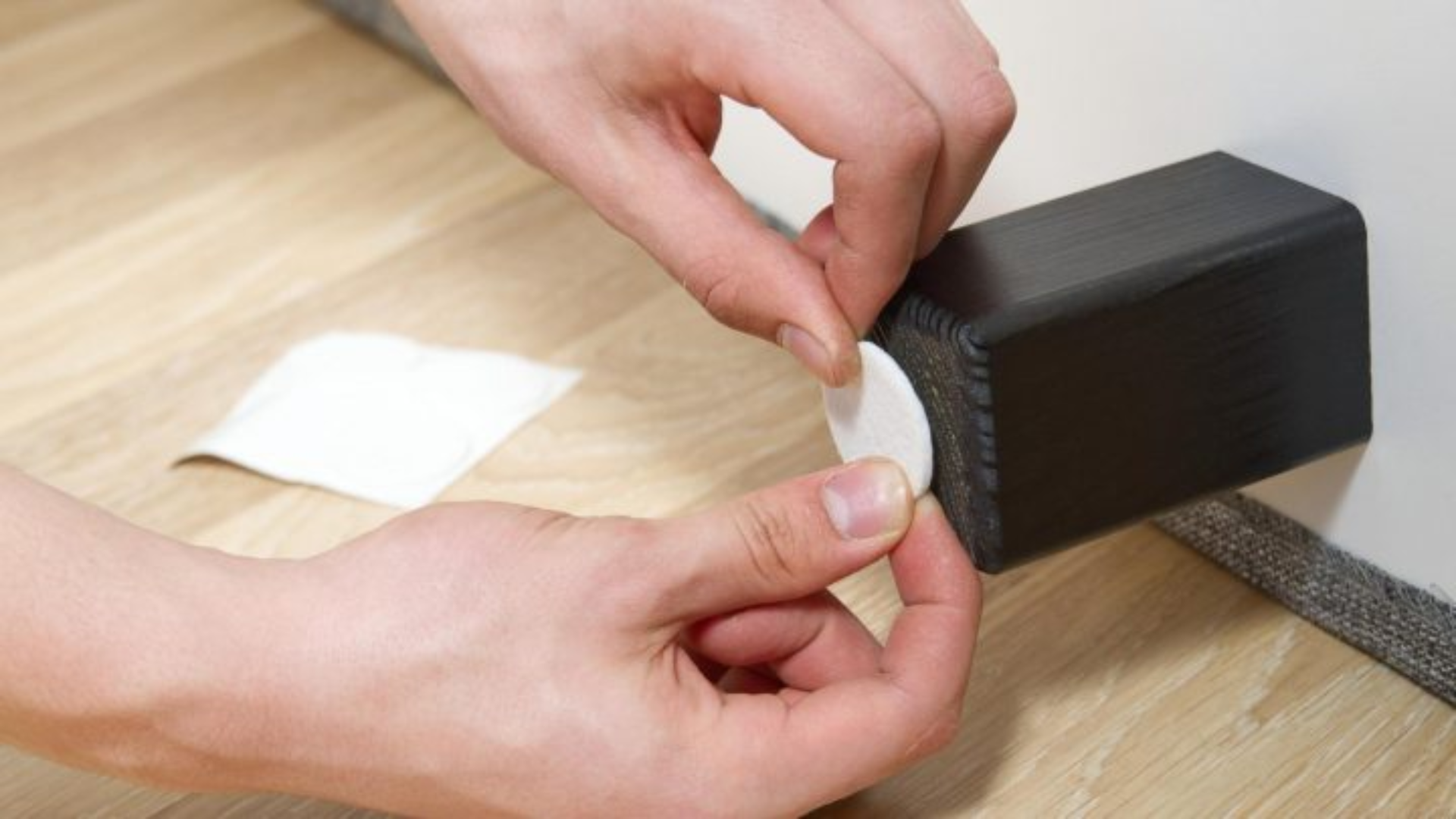
Furniture can leave deep scratches on hardwood floors, especially when it’s moved around. The legs of chairs, sofas, and tables can dig into the surface over time.
Stick felt pads or soft rubber protectors to the bottom of each leg. This creates a gentle buffer between the furniture and the floor.
Replace the pads if they get dirty or fall off. Check them often, especially on chairs that move a lot.
2. Place Rugs in Busy Areas
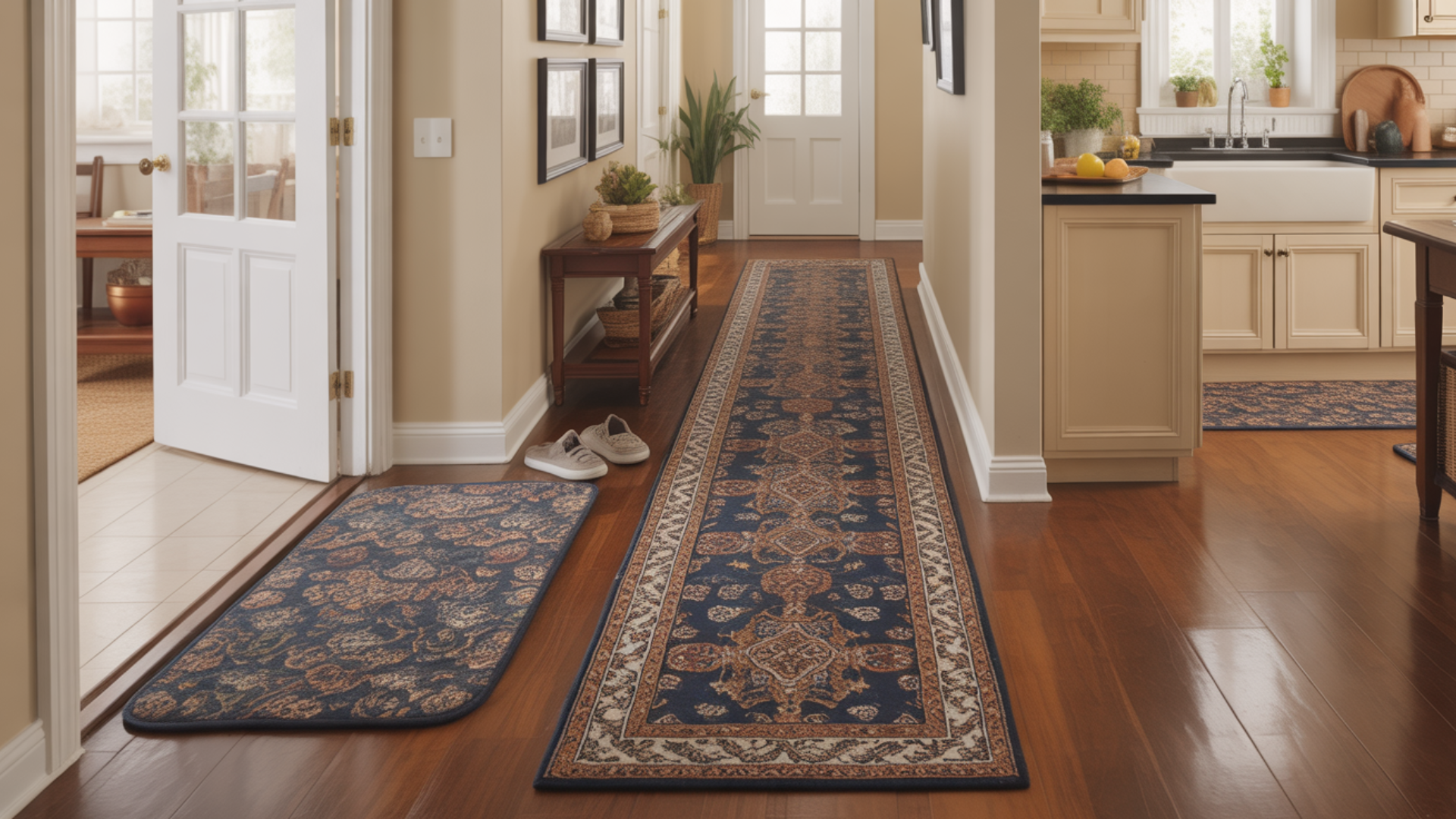
Rugs are an easy way to protect high-traffic areas, such as entryways, hallways, and places where people often stand, like the kitchen sink.
Rugs catch dust, dirt, and debris that could scratch the floor. They also soften the impact from shoes or heavy foot traffic.
Use a non-slip rug pad underneath to keep the rug from sliding and to prevent marks on the floor.
3. Keep Floors Clean
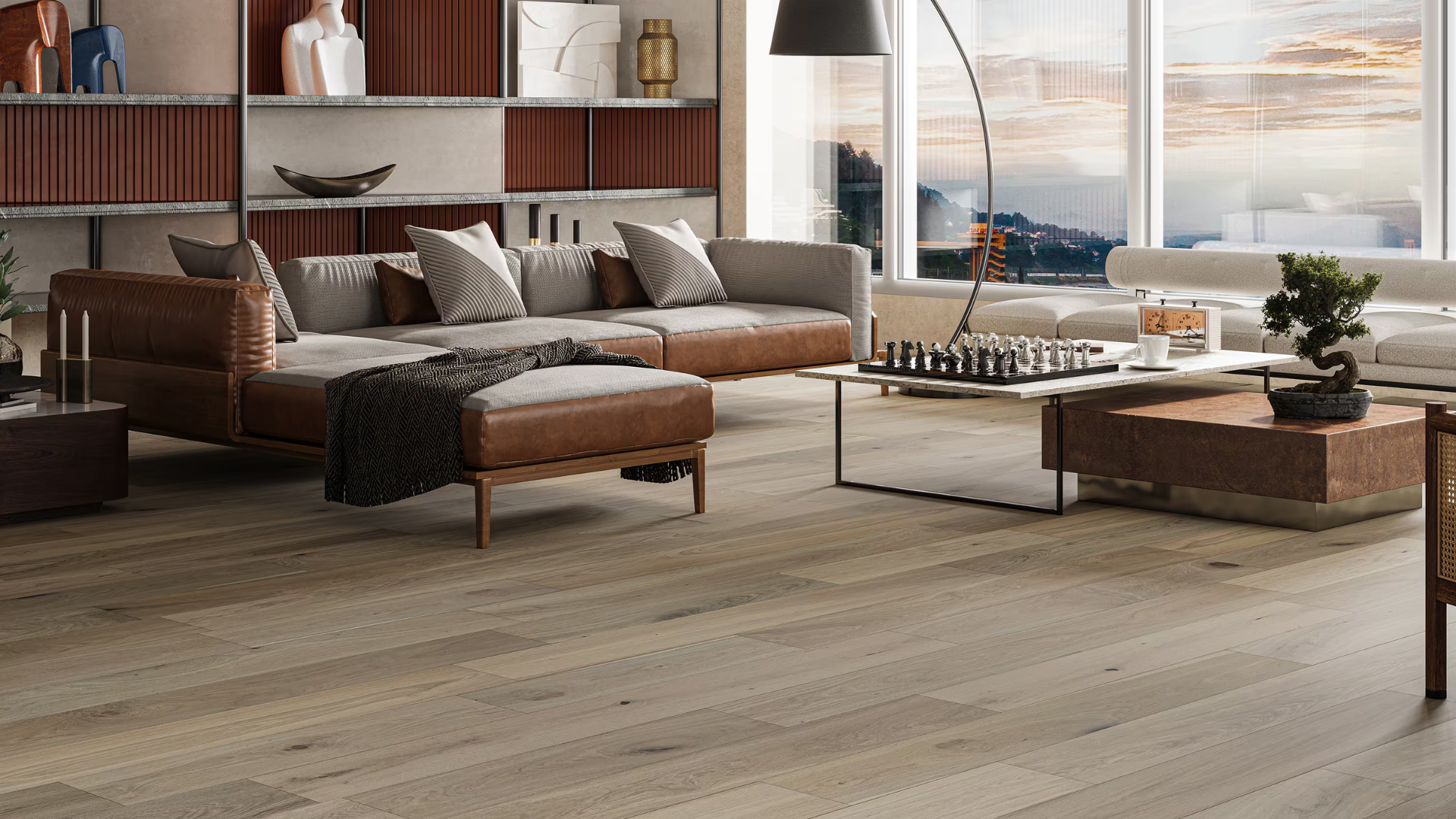
Even small bits of dirt can scratch wood like sandpaper, so regular cleaning is important. Sweep, vacuum, or dust mop your floors several times a week.
Use soft-bristled brooms or vacuums that are safe for hardwood. Avoid stiff brushes or metal parts that could cause damage.
Cleaning often helps keep the finish looking good and prevents long-term wear.
4. Wipe Spills Quickly

Water is one of the biggest threats to wood floors. If a drink spills or a pet has an accident, clean it up right away.
Liquids that sit too long can soak into the wood, causing stains, swelling, or mold.
Use a dry or slightly damp cloth to blot up the spill. Don’t let water puddle or spread. Even a little moisture can cause problems over time.
5. Trim Pet Nails
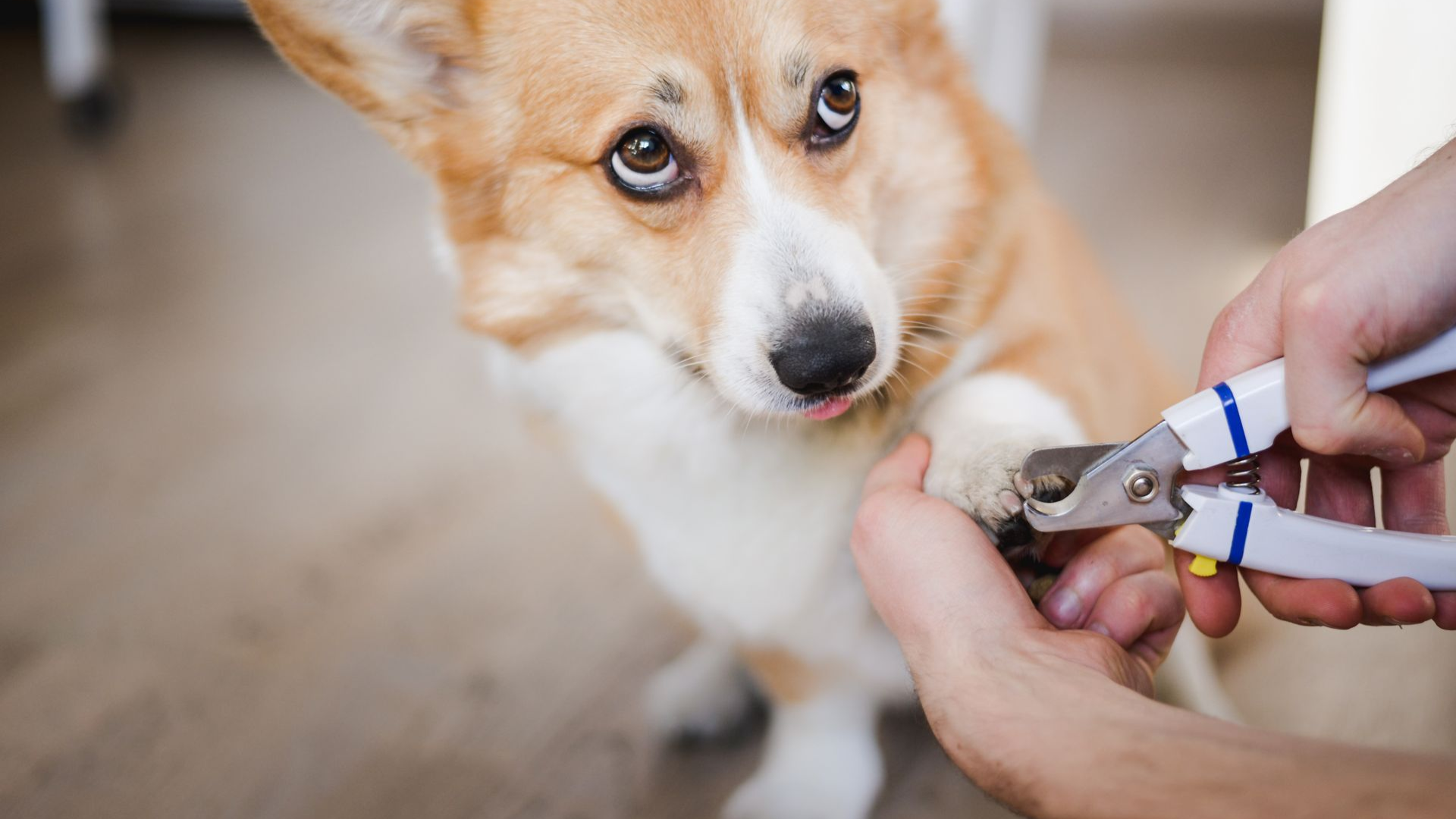
Pets are part of the family, but their claws can damage floors. Long nails can scratch the wood, especially when pets run or slide.
Regularly trim your pet’s nails to keep them short and smooth.
You can do this at home or ask your vet or groomer. This helps protect your floors and also keeps your pets from slipping.
6. Remove Shoes Indoors
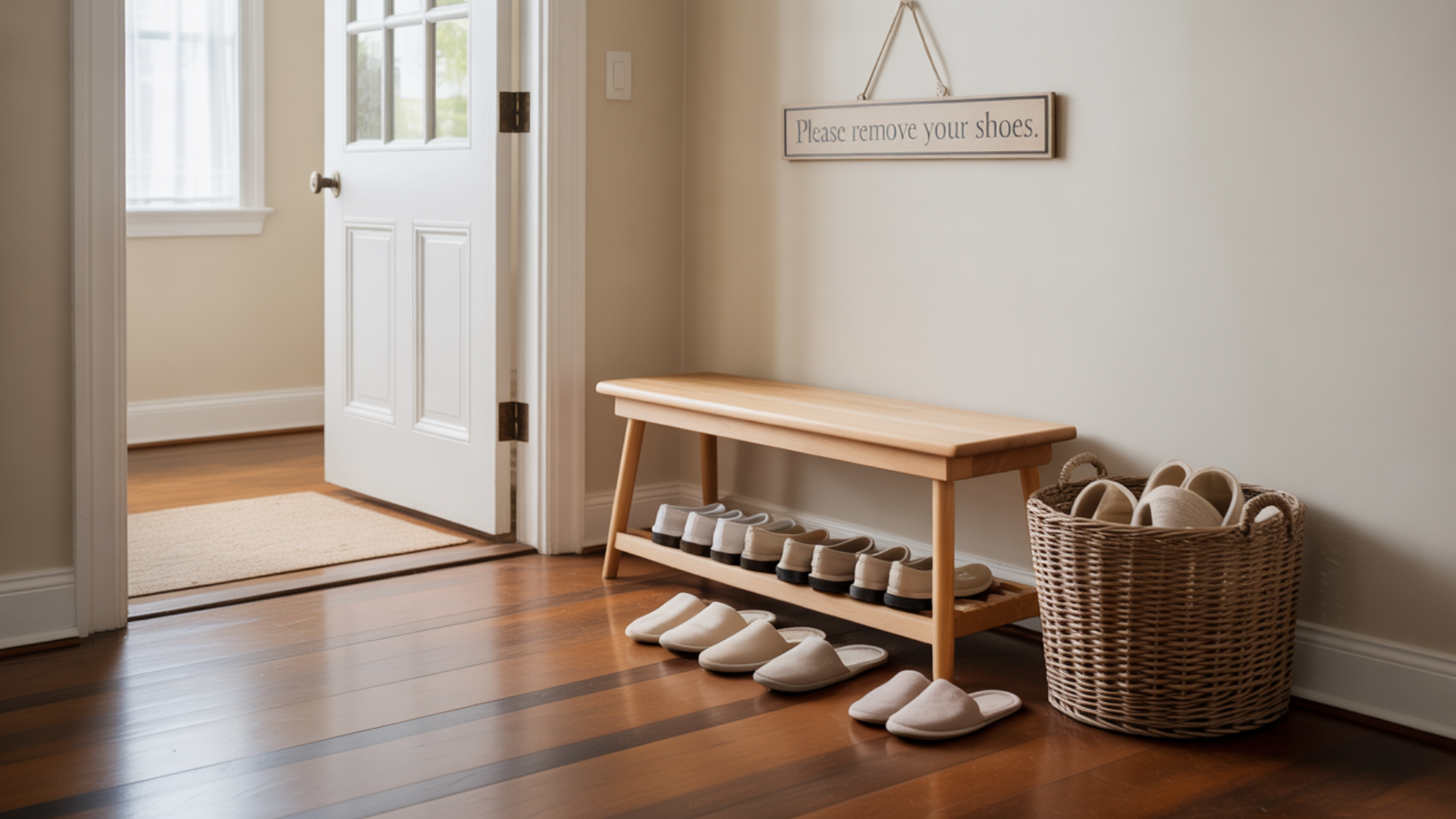
Shoes bring in dirt, grit, and small stones from outside. These can grind into the wood and create scratches. High heels or heavy boots can also dent the surface.
Make it a habit to take off your shoes at the door. Set up a small shoe bench or basket to remind guests and family members to do the same. It keeps floors cleaner and safer.
7. Control Humidity

Hardwood reacts to changes in air moisture. If it’s too dry, the wood can shrink and crack. If it’s too humid, it can swell or warp. Try to keep indoor humidity between 35% and 55%.
Use a humidifier in dry seasons and a dehumidifier when it’s damp. A small investment in air control can protect your floors year-round.
8. Protect from Sunlight

Direct sunlight can cause fading and uneven coloring on wood floors. Over time, the UV rays break down the finish and lighten the wood.
Close blinds or curtains during the brightest part of the day.
You can also use window film to block UV rays. Sometimes, move rugs and furniture around to avoid dark or light patches forming in one spot.
9. Lift, Don’t Drag furniture
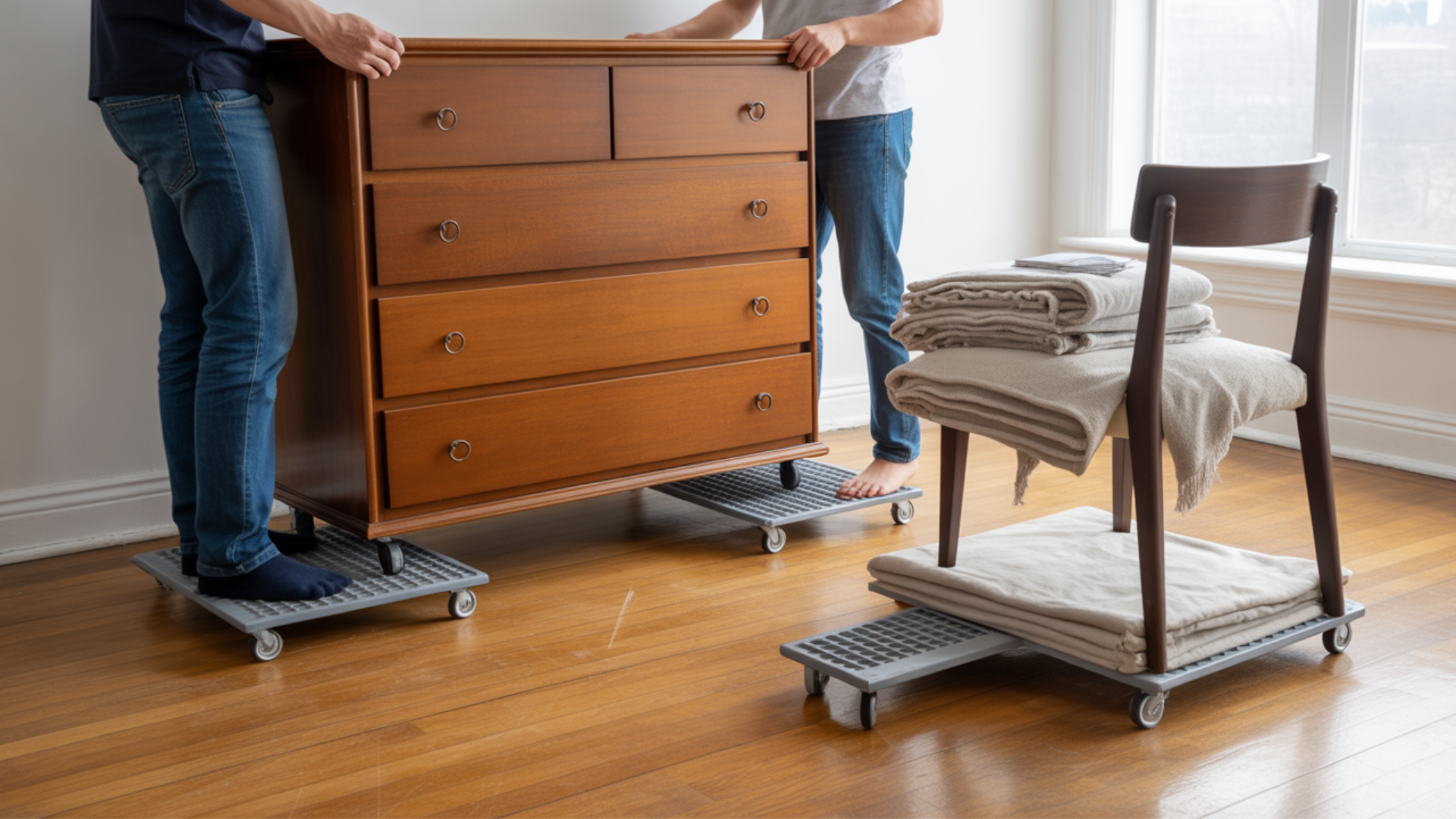
Dragging heavy furniture across wood can leave long scratches or gouges. Always lift items when moving them, even just a little.
Ask for help with larger pieces, or use sliders designed for hardwood floors.
If lifting isn’t possible, put a soft blanket under the furniture to reduce friction. Taking this extra step saves the floor from permanent marks.
10. Use Door Mats
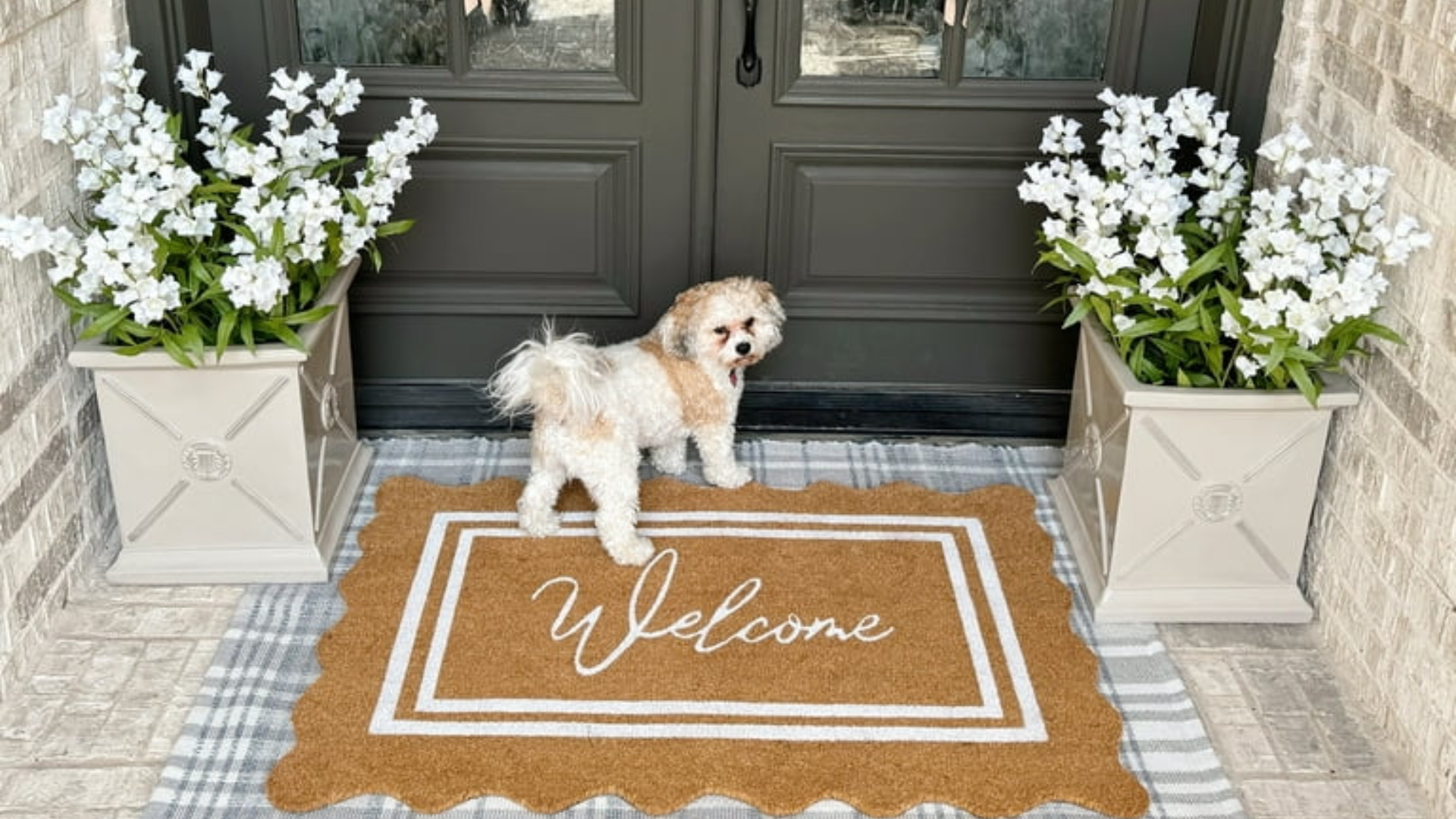
Door mats trap dirt, water, and road salt before they reach your floors. Place one outside the door and another just inside. Encourage everyone to wipe their feet.
Clean the mats regularly so they work well. This small habit cuts down on the amount of cleaning you have to do and helps your floors last longer.
11. Clean with the Right Products
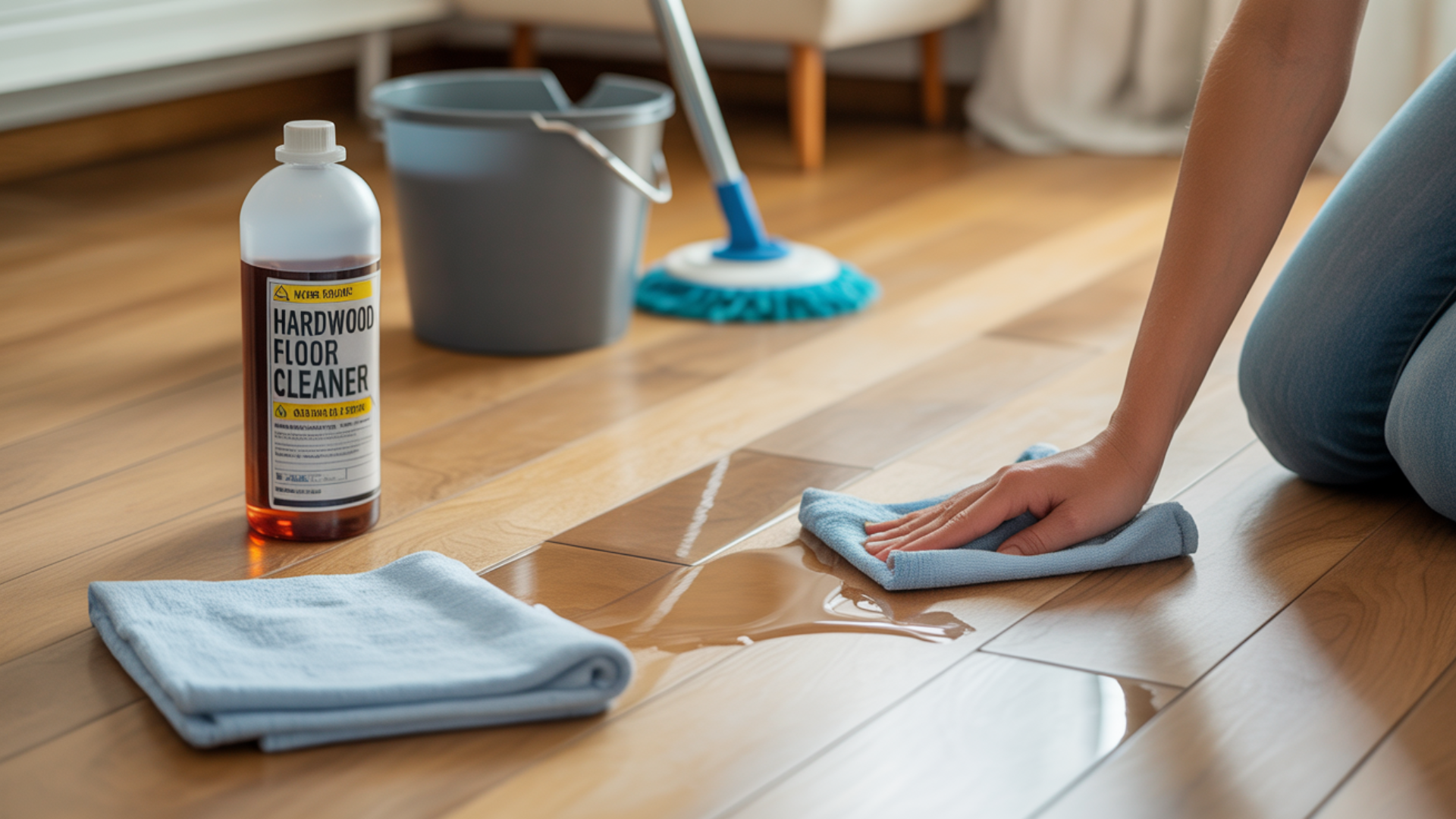
Not all cleaning products are safe for hardwood. Some contain harsh chemicals or too much water, which can harm the finish. Use only products labeled for hardwood floors.
Follow the instructions and don’t overuse them. A damp cloth or mop is enough—avoid soaking the floor.
Test new cleaners on a small area first to make sure they don’t cause damage.
12. Refinish When Needed

Over time, wood floors lose their shine. Scratches, dull spots, and worn areas may appear. Refinishing is a way to bring back the original look.
This usually involves sanding the surface and applying a new finish. It’s a big job, but it can make old floors look new again.
You can hire a professional or follow detailed DIY instructions carefully.
13. Use Protective Mats Under Chairs
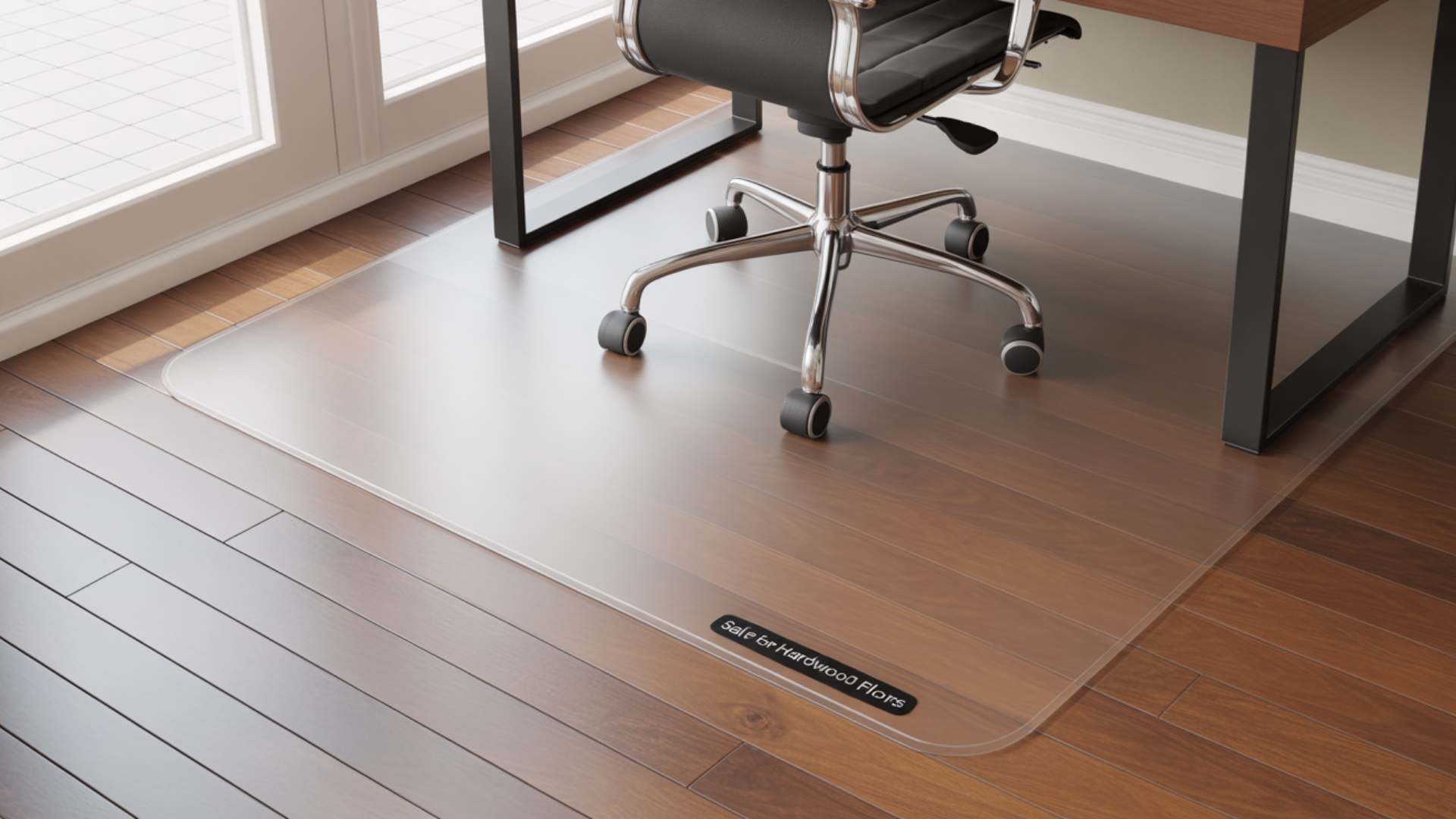
Office chairs with wheels are rough on floors. The wheels dig into the wood and create grooves. Place a clear plastic mat under the chair.
Choose one made for hardwood so it doesn’t discolor or stick. This protects the floor while still allowing the chair to roll easily.
14. Avoid High Heels Indoors
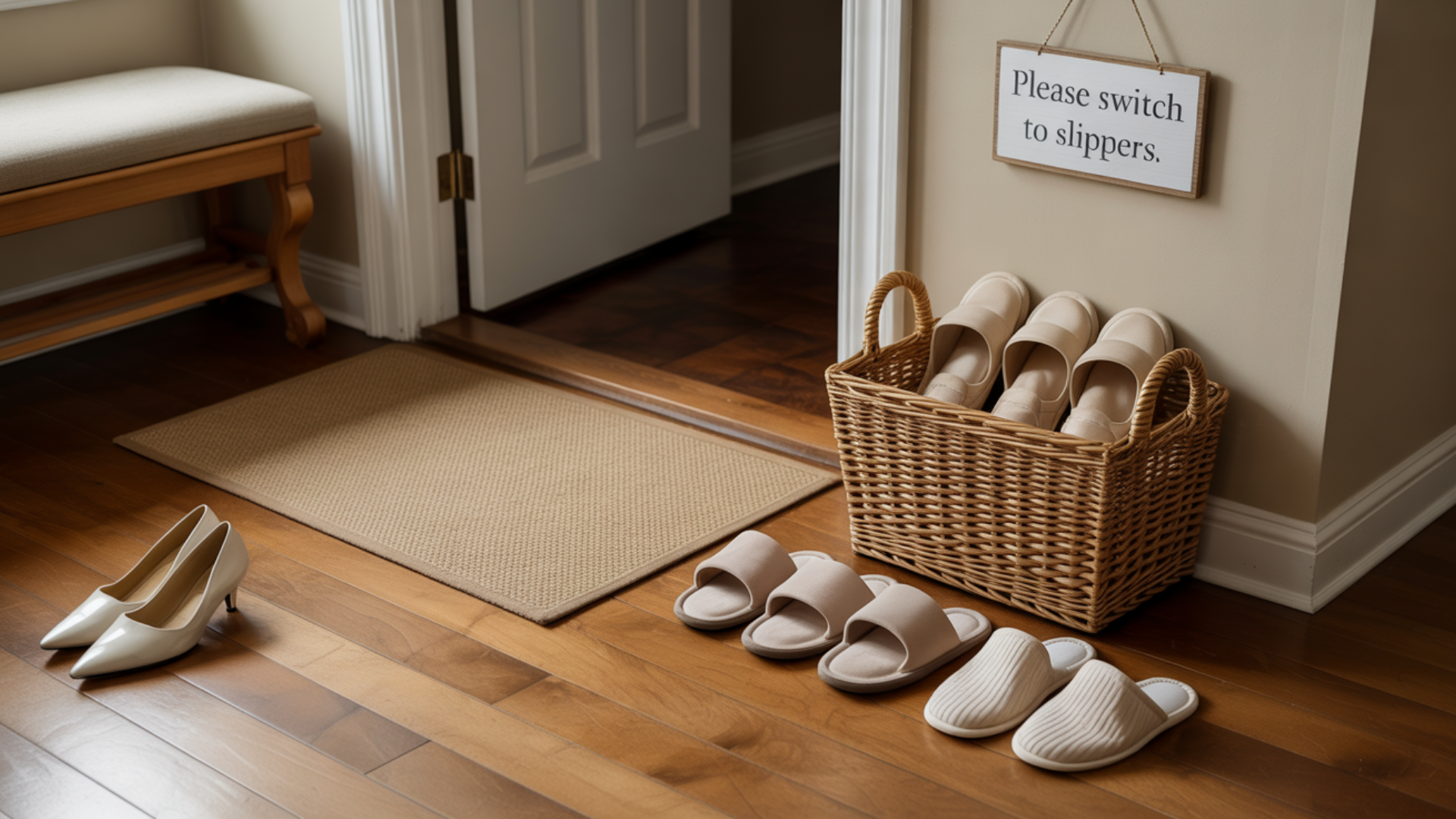
High heels put a lot of pressure on a small area. This can dent and even crack wood boards. Ask family and guests to switch to soft slippers or socks indoors.
To make it easier, keep a small shelf or basket of slippers near the door. It’s a simple way to avoid damage without being rude.
15. Keep Floors Dry

Too much water is dangerous for wood. Wet mops, buckets, and steam cleaners can all cause damage. Use only a lightly damp mop or cloth.
Wipe the floor dry right after. If your floor gets wet from a spill, leak, or pet mess, dry it fast with a towel. Keeping things dry helps prevent swelling, mold, and warping.
16. Regularly Check for Damage
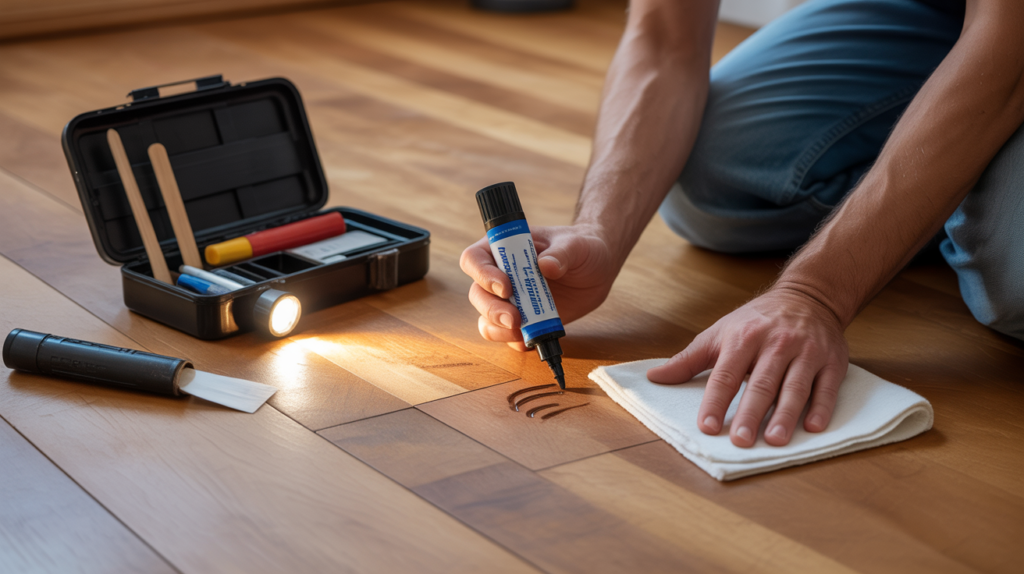
Don’t wait until small problems become big repairs. When you clean, look for scratches, dents, or loose boards. Use touch-up markers, wood filler, or wax sticks to fix light damage.
If you’re not sure what to do, ask a flooring expert. Fixing problems early saves time and money later.
17. Be Careful with Cleaning Tools
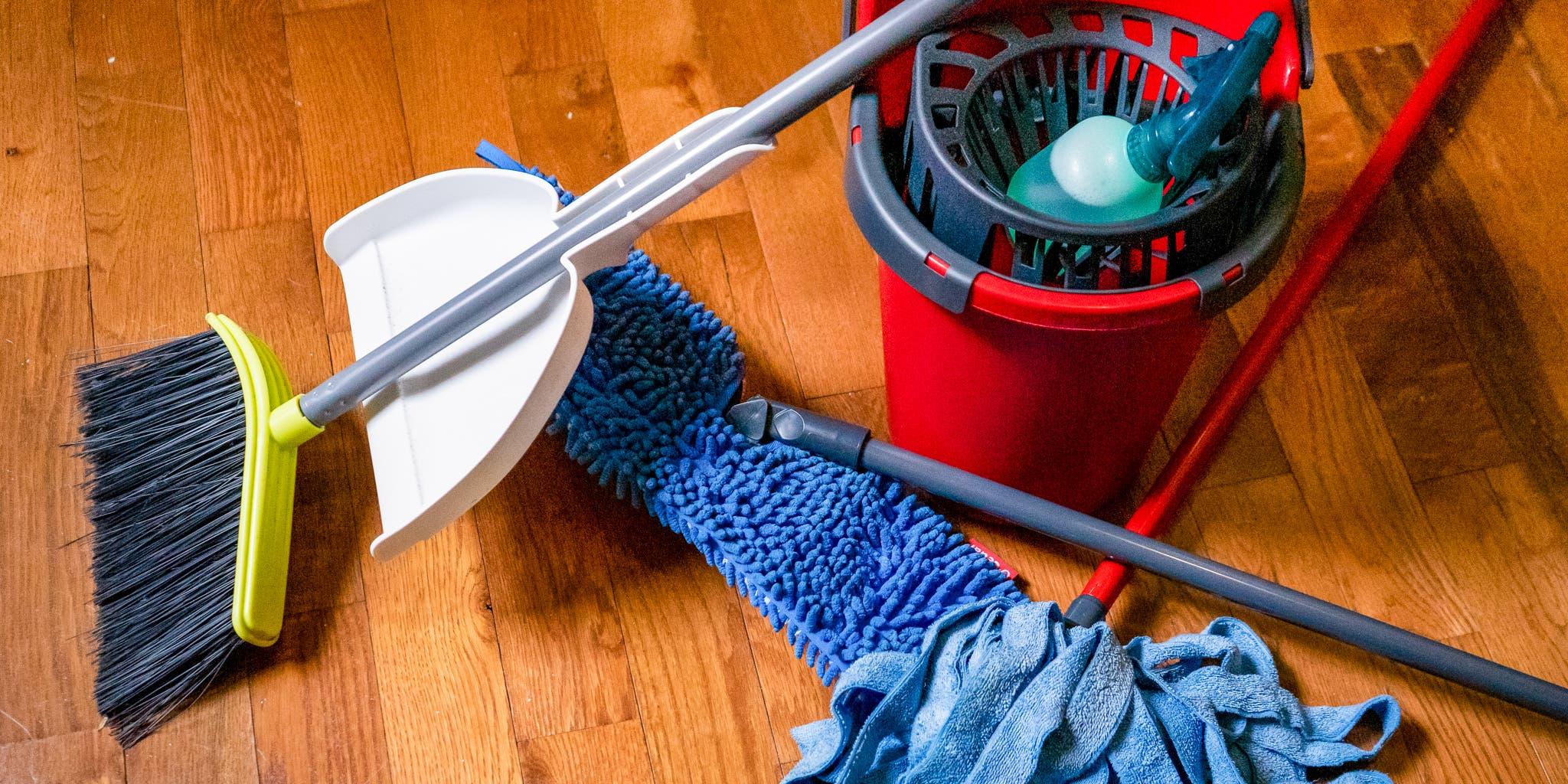
Some tools can harm the floor even while cleaning. Avoid hard-bristle brooms, rough scrubbers, or vacuums with beaters, as these can scratch or chip the wood.
Choose tools made for hardwood floors, such as soft brooms, microfiber mops, and hardwood-safe vacuums. Replace worn-out tools before they cause damage.
Myths About Hardwood Floor Care
Some common ideas about wood floors sound right, but they aren’t. Believing these myths can lead to damage over time.
A few myths to avoid: Avoiding these myths makes it easier to care for your floors correctly from the start.
“You can mop wood like tile.”
No, you shouldn’t. Wood and water don’t mix well. A soaked mop can leave too much moisture behind, which may cause the boards to swell or crack over time. Always use a damp, not wet, mop.
“All vacuums are fine.”
Not true. Some vacuums have stiff brushes or hard rollers that can scratch the finish. Use a vacuum made for hardwood, or turn off the brush setting if you have one.
“Sunlight makes floors look warm.”
It might look nice at first. But direct sunlight can fade and dry out the wood. Over time, parts of the floor may look lighter or older than the rest. Use curtains or blinds during the brightest hours.
“Scratches are normal, don’t worry.”
They may seem small, but they add up. A few scratches can turn into a worn-looking floor. Dirt can settle into them and make them worse. It’s better to fix small marks before they spread.
Conclusion
Hardwood floors are a durable and attractive feature in any home. However, without proper care, they can gradually lose their charm.
Dirt, moisture, and sunlight may cause wear, while foot traffic and furniture can leave behind scuffs and dents.
The encouraging part is that consistent, simple habits go a long way.
Regular sweeping, cleaning up spills promptly, using rugs or pads beneath heavy furniture, trimming pet nails, and leaving shoes at the door all help maintain the surface and finish of your floors.
It’s also wise to inspect your floors regularly. Addressing minor issues early, like a small scratch, can prevent costly repairs down the line.
With a bit of ongoing attention, you can keep your hardwood floors looking their best for years to come.
You don’t need to do everything at once; start with the basics. A little care today ensures a strong, well-maintained floor for tomorrow.

